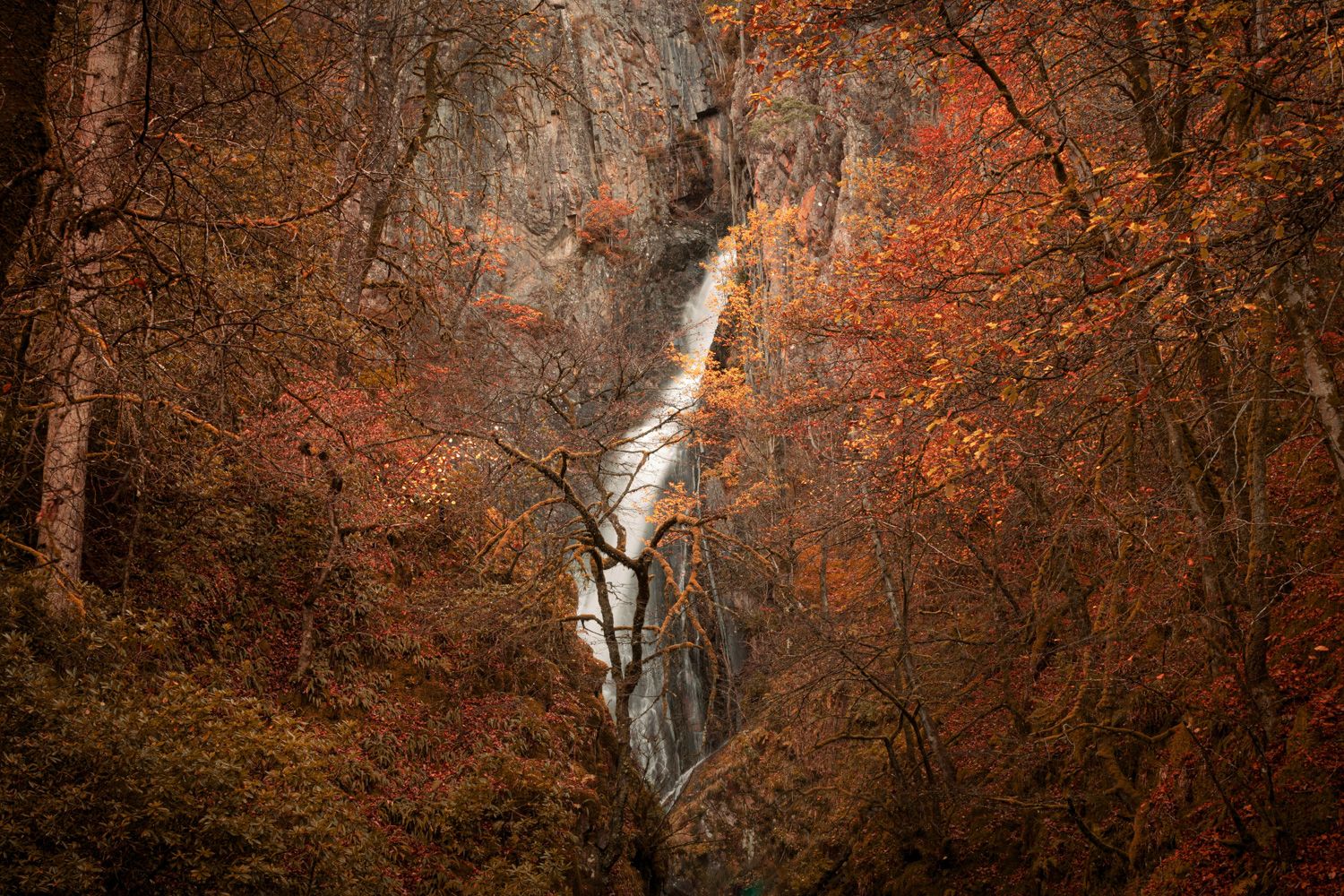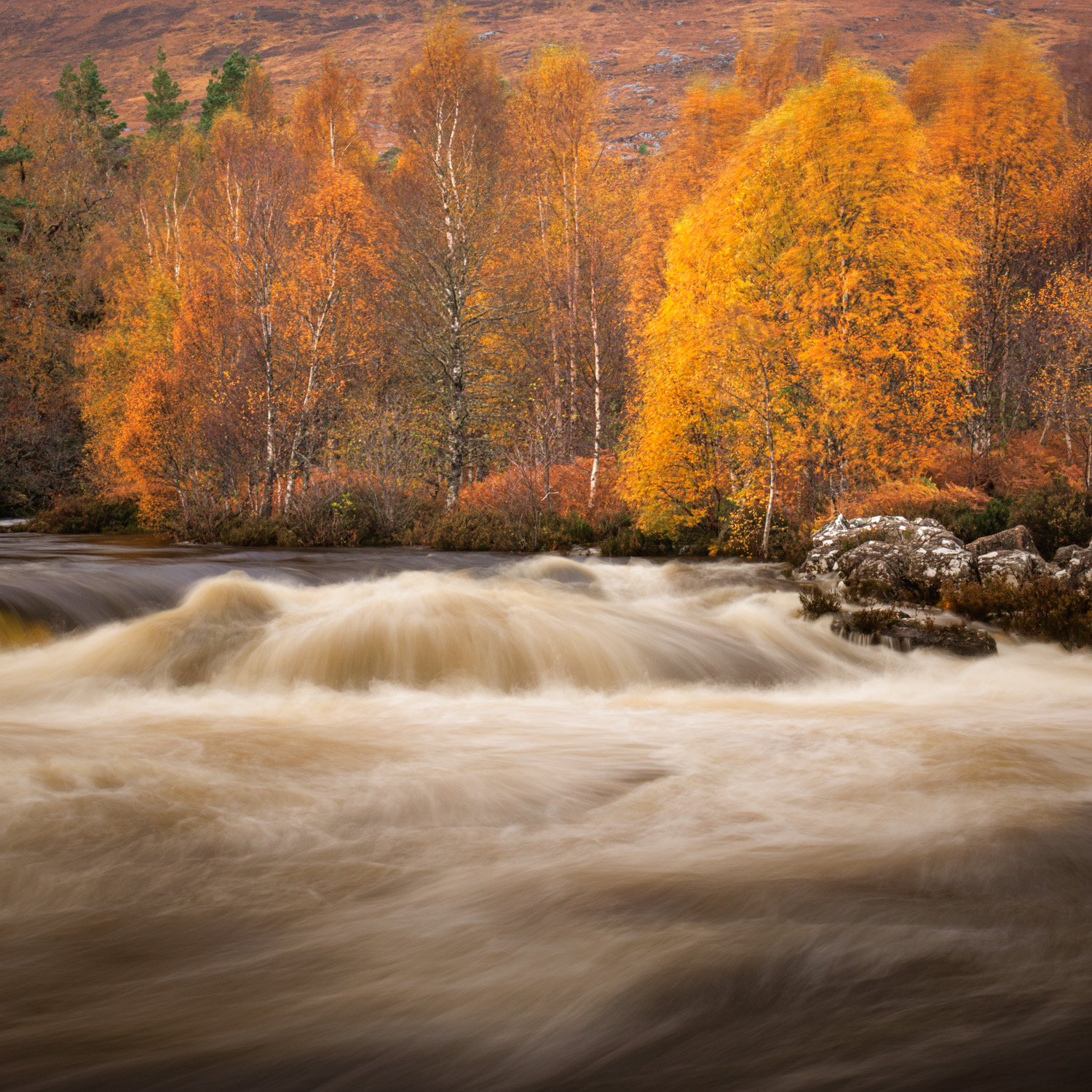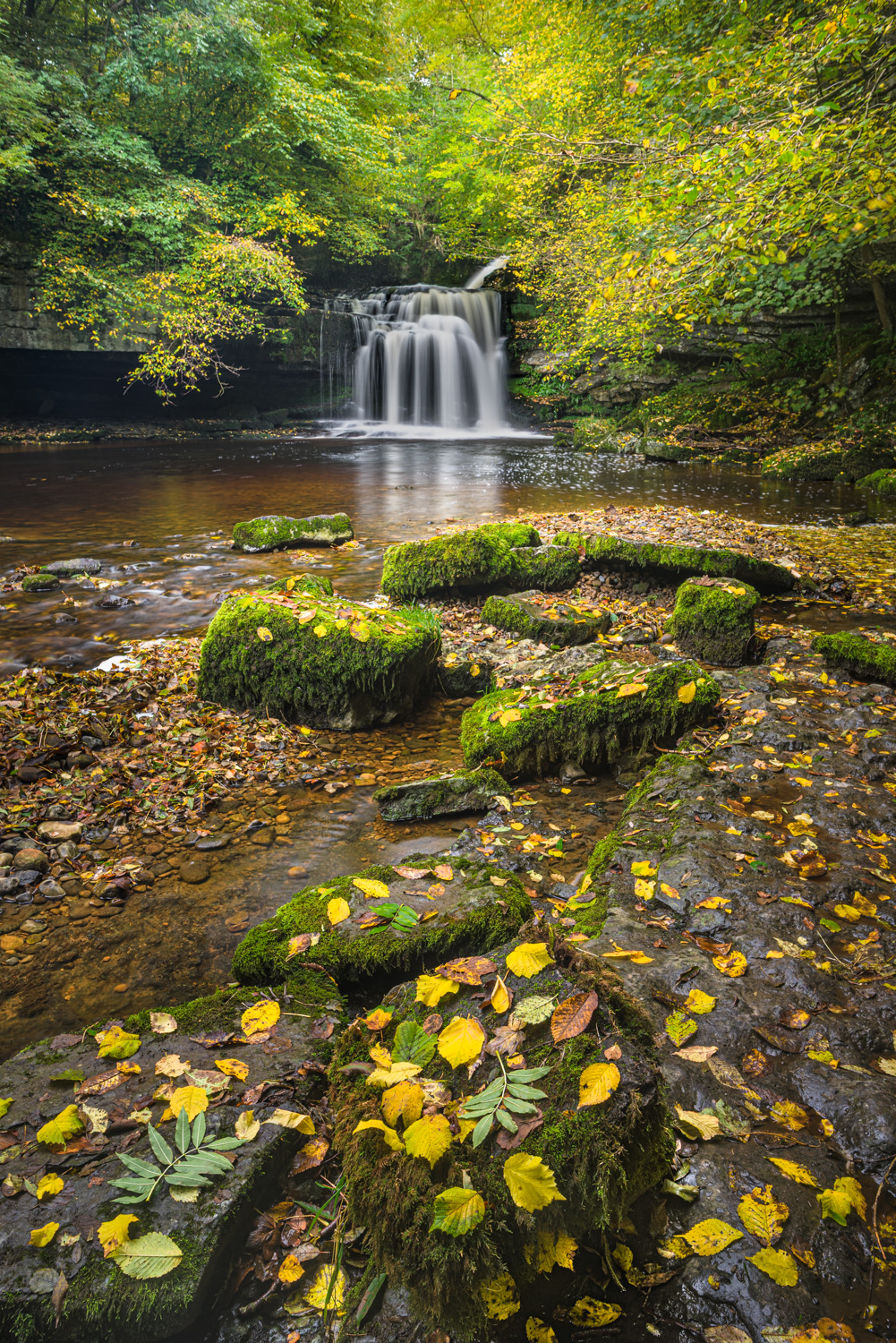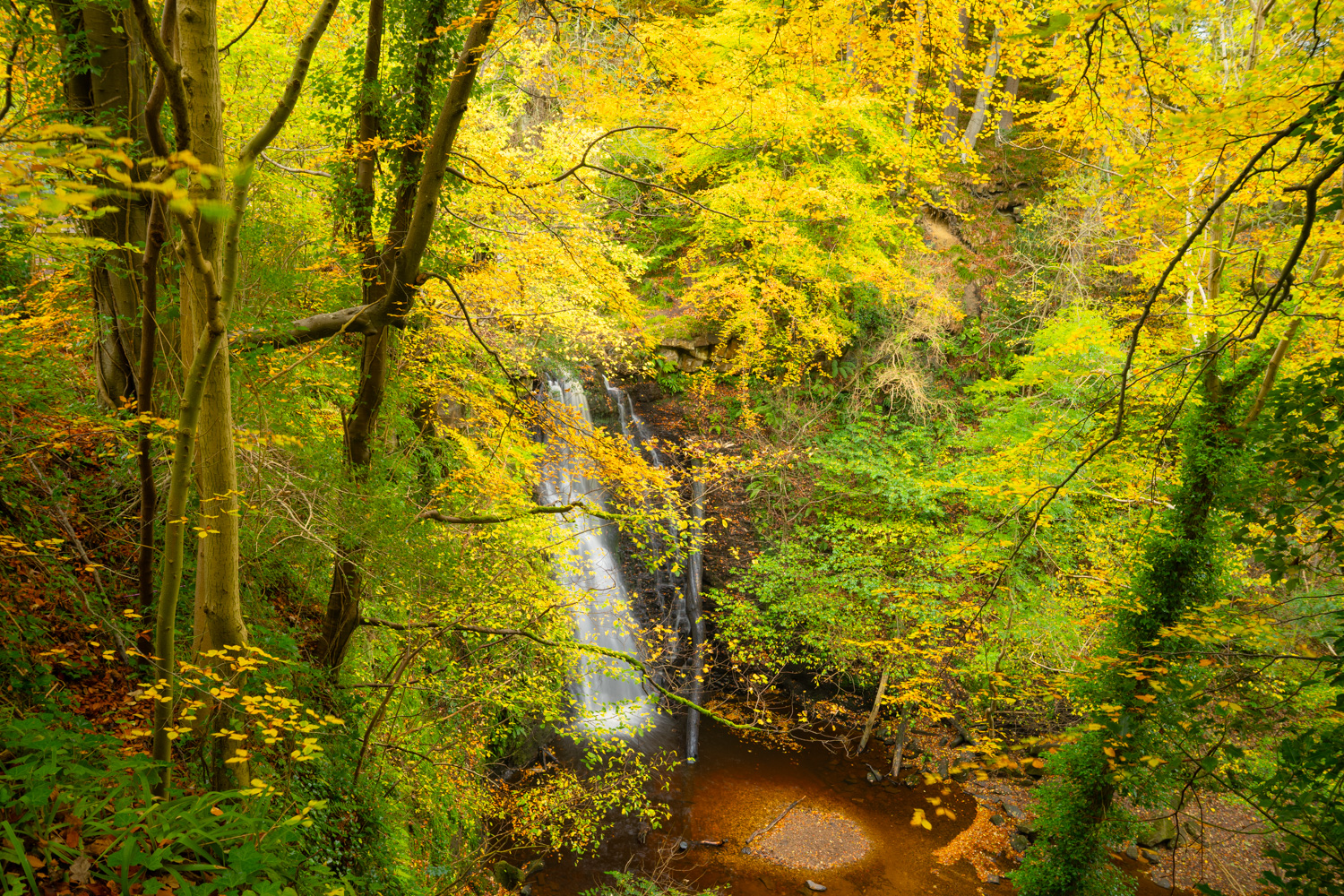
Silky Streams and Autumn Scenes
As autumn deepens and the leaves begin their fiery descent, the UK’s woodland streams and waterfalls come to life. October brings both colour and flow—ideal conditions for creating elegant, motion-filled images using long exposure techniques.
In this article, I’ll share how I approach photographing waterfalls and streams in the autumn landscape, and how slowing down your shutter can bring calm, grace, and atmosphere to your portfolio.
Why Autumn?

There’s something magical about waterfalls framed by golden leaves, mossy rocks, and gentle mist. Rainfall increases in October, which breathes life into previously modest streams—yet the trees still cling to their seasonal colour, offering a perfect contrast between motion and stillness.
Add in soft light from lower sun angles and frequent overcast days (ideal for long exposures), and you’ve got a perfect recipe for powerful, evocative imagery.
Essential Gear Checklist
- Tripod – Absolutely essential. Stability is everything with slow shutter speeds.
- Neutral Density (ND) Filters – These reduce the amount of light hitting your sensor, allowing slower shutter speeds even during daylight. A 6‑stop and 10‑stop ND filter are perfect for most waterfall scenes.
- Polarising Filter – Cuts glare from wet rocks and enhances the richness of autumn colours. Also reduces light by around 1–2 stops, which can help extend exposure time.
- Remote release or 2-second timer – Prevents camera shake when triggering the shutter.
Camera Settings to Consider
Long exposures are all about control. Try starting with:
- ISO 100 – Keeps image quality high and allows longer exposures.
- Aperture f/8 to f/11 – Ideal for depth of field and sharpness.
- Shutter speed between 0.5–4 seconds – Adjust depending on water speed and desired effect. Longer for silky flow, shorter for texture and detail.
- Manual focus – Focus precisely using Live View, especially in low light or with filters on.
Always shoot in RAW so you have flexibility to adjust white balance and exposure during post-processing.
Working the Scene

- Scout your angle – Move around (safely!) to find interesting foreground rocks, fallen leaves, or overhanging branches.
- Use leading lines – Curved streams, diagonals in rock formations or leaf trails can help guide the eye.
- Be patient – Wait for the right rhythm of the water and take multiple exposures with different times to find your preferred look.
- Watch your highlights – Fast-moving water can easily blow out. Check your histogram or use highlight alerts.
Autumn-Specific Touches
- Use fallen leaves on rocks or fallen tree trunks and branches to add warmth and narrative to your images.
- Slight drizzle or fog can enhance mood—don't pack up if it starts raining (just protect your gear).
- Consider wider scenes that show the waterfall in its seasonal context, with golden canopies and coppery bracken adding colour and texture.
Post-Processing Tips

- Balance contrast carefully – you’ll want the water to appear soft but not flat.
- Boost the warm tones to emphasise the season.
- Consider dodging and burning to guide the viewer’s eye and add depth.
- A subtle vignette can help contain and focus the scene.
Truly Special
Waterfalls are a year-round subject, but in autumn they become something truly special—set within a canvas of rich colour and often accompanied by misty, atmospheric light. By using long exposure techniques, you’re not just capturing the scene; you’re expressing the passage of time in a single, poetic frame.
So, pack your filters and wellies, find a promising woodland stream, and let time flow through your lens. Better still, why not hone your skills further by joining me on one of my many autumn workshops I run every year? Please take a look at the Workshops Page of my website for my current offerings here >>.